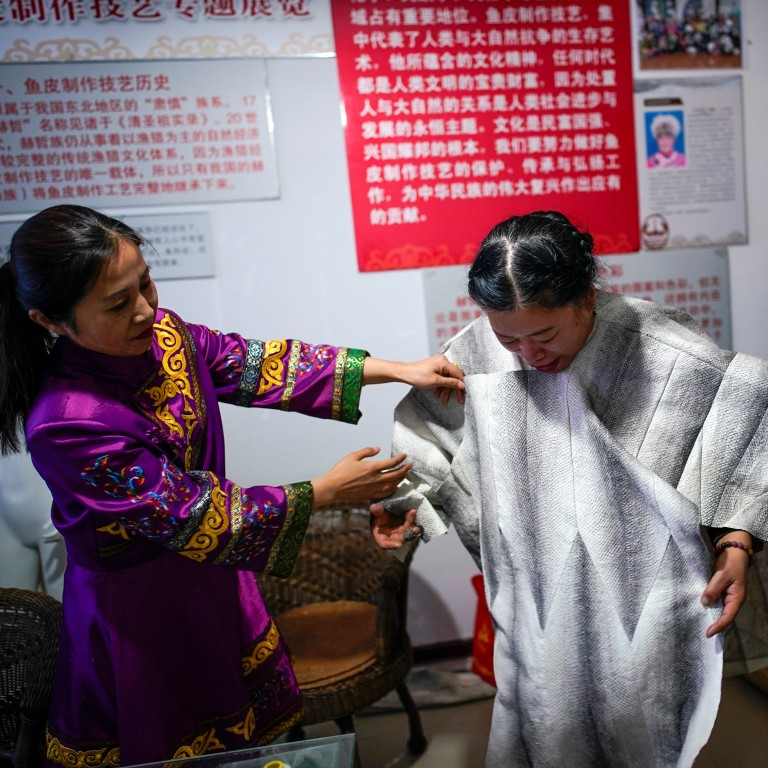
How sharing fish-skin clothing traditions of China’s ‘mermaid’ Hezhen people may keep them alive
- You Wenfeng, who belongs to an ethnic group of 5,000 people, is giving Han Chinese students an education in folklore and the craft she learned from her mother
- More than 50 fish skins and weeks of patience and skill are needed in making a top and trousers
You Wenfeng, who belongs to China’s Hezhen ethnic group, is one of the few people in her community who can still make clothing from fish skins.
She was not born when her kinsmen were thrown into labour camps during Japan’s occupation of Manchuria in the 1930s and 1940s.
“Many Hezhen clans perished, but my mother survived to pass on her fish-skin knowledge to me,” the 68-year-old said.
A Tungusic people native to Siberia and on the Black Dragon river, as the Amur is known in China, the Hezhen rebuilt its population to 5,000 from 300 after the second world war. Such was their skill on the water that legend said they were descended from mermaids.

But that has not stopped the decline of Hezhen culture, including the tradition of making garments from the skins of carp, pike and salmon.
Few in the latest generation are interested in learning the craft, and fish-skin clothing is also no longer a regular part of daily Hezhen attire.
Sensing this, You began to share her knowledge with Han Chinese women in Tongjiang, the city in northeastern Heilongjiang province near the border with Russia where she now lives.
Japanese wartime photos strike a nerve in China
Her students also learn the Yimakan, a form of storytelling that moves between speech and song in the Hezhen language.
The education is arduous, with You’s followers committing songs of fishing, hunting and ancient tribal conquests to memory through phonetics alone.
With little prompting, You burst into song in her studio flat, singing of a woman’s wish to bear a son for her hunter-husband.
Hezhen hunters rode on canoes made from birch, or “swift horses”, You said. “When the forests flooded to the treetops, there’d be fish everywhere. Just throw your spear into the water and there’d be fish.”

These days, fish are sourced from the marketplace. And instead of tiger bone and deer tendon, embroidery needles and cotton thread are used.
A top and a pair of trousers for a woman require 50 fish, and for a man, 56, the teacher said. A fish is skinned and the material dried. It is then repeatedly passed through the wooden jaws of a rudimentary press to soften it. The process takes a month and sewing requires a further 20 days.
Master carpenter’s ancient Chinese skills are a YouTube sensation
Finding a commercial use for fish skin might save the craft.
Fish leather has inspired luxury fashion houses such as Dior and Prada to occasionally include it in their garments and accessories, but the fabric is still largely a curiosity.
“Look at the criss-cross pattern on the skin,” You said. “It’s stronger than most skins.”

